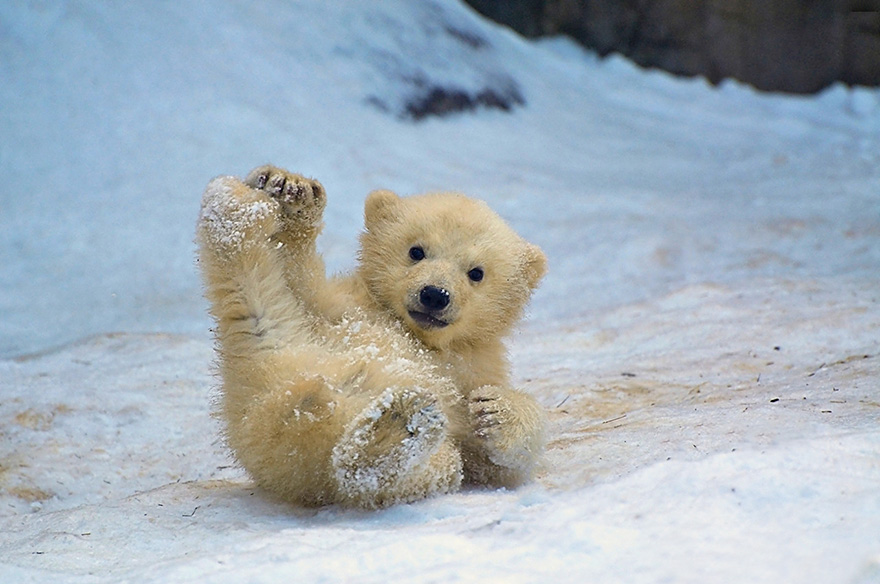
When one thinks of the Arctic, images of vast icy landscapes and majestic creatures come to mind. Among them, the adorable polar bears stand out as one of nature's most captivating mammals. These magnificent animals, with their fluffy white fur and playful demeanor, have a unique charm that has captured the hearts of many. From their incredible hunting skills to their nurturing behavior towards their young, polar bears are not just beautiful to look at; they are fascinating beings that play a crucial role in their ecosystem.
Polar bears, scientifically known as Ursus maritimus, are primarily found in the circumpolar Arctic regions. Their habitat is increasingly threatened due to climate change and industrial activities, leading to a decline in their populations. Conservation efforts are underway to protect these adorable polar bears and their habitats, ensuring that future generations can appreciate their beauty and significance in our world.
In this article, we will delve deeper into the lives of these adorable polar bears. We will explore their characteristics, behaviors, and the challenges they face in the wild. By understanding their world, we can appreciate these magnificent creatures even more and contribute to their conservation.
What Makes Polar Bears So Adorable?
Polar bears are known for their striking appearance and playful nature. Their thick white fur, which helps them camouflage in their icy surroundings, is not only adorable but also serves a practical purpose. Here are some characteristics that make polar bears undeniably cute:
- Fluffy Fur: Their dense coat keeps them warm in freezing temperatures and gives them a cuddly appearance.
- Playful Behavior: Young polar bears often engage in playful antics, sliding down icy slopes and wrestling with each other.
- Big Paws: Their large paws help them walk on thin ice and swim efficiently, adding to their charm.
- Curious Nature: Polar bear cubs are known for their inquisitive personalities, often exploring their surroundings with wide-eyed wonder.
How Do Polar Bears Adapt to Their Environment?
Adapting to the harsh Arctic environment is vital for the survival of adorable polar bears. They have evolved several remarkable traits that enable them to thrive in extreme conditions:
- Insulation: Their thick layer of blubber, along with their fur, provides excellent insulation against the cold.
- Hunting Skills: Polar bears are skilled hunters, primarily preying on seals. They use their keen sense of smell to locate breathing holes in the ice.
- Swimming Ability: These bears are excellent swimmers, capable of covering long distances in search of food or new habitats.
Why Are Polar Bears Considered Marine Mammals?
Though polar bears are terrestrial mammals, they are classified as marine mammals due to their reliance on the ocean for survival. They spend much of their time on sea ice, hunting seals and other marine animals. This classification highlights their unique lifestyle and the importance of healthy marine ecosystems for their survival.
What Threats Do Adorable Polar Bears Face?
Despite their charm and adaptability, adorable polar bears are under threat from various factors, primarily due to human activity and climate change:
- Climate Change: Melting sea ice due to global warming poses a significant threat, as it limits their hunting grounds and reduces access to prey.
- Pollution: Contaminants in the Arctic environment can affect polar bears' health and the health of their prey.
- Oil and Gas Exploration: Industrial activities in the Arctic can disrupt their habitats and lead to oil spills, further threatening their survival.
How Do Polar Bears Care for Their Young?
One of the most heartwarming aspects of adorable polar bears is their nurturing behavior. Mother polar bears are known to be incredibly caring and protective of their cubs. Here are some key points about their parenting:
- Denning: Female polar bears create dens in the snow to give birth and raise their cubs, providing a safe environment away from predators.
- Nursing: Mother bears nurse their young for about two years, teaching them essential survival skills.
- Teaching: Mothers teach their cubs how to hunt and navigate the icy landscape, ensuring they can survive on their own.
What Can We Do to Help Protect Polar Bears?
As the adorable polar bears face numerous threats, it is crucial for us to take action to protect them. Here are some ways we can help:
- Support Conservation Efforts: Contributing to organizations focused on polar bear conservation can make a significant impact.
- Reduce Carbon Footprint: Taking steps to reduce emissions can help combat climate change and its effects on polar bear habitats.
- Raise Awareness: Educating others about the challenges facing polar bears can lead to greater public support for protective measures.
Where Can You See Polar Bears in the Wild?
If you wish to observe these adorable polar bears in their natural habitat, several locations around the world offer polar bear viewing opportunities:
- Churchill, Canada: Known as the "Polar Bear Capital of the World," Churchill offers guided tours to see polar bears in the wild.
- Svalbard, Norway: This archipelago is home to a large population of polar bears, and eco-tours often include wildlife viewing.
- Wrangel Island, Russia: This remote island is a haven for polar bears and is accessible through guided expeditions.
What Is the Future for Adorable Polar Bears?
The future of adorable polar bears depends on our collective efforts to combat climate change and protect their habitats. With dedicated conservation initiatives and increased awareness, we can work towards ensuring these magnificent creatures continue to thrive in the wild.
In conclusion, the adorable polar bears are not only a symbol of the Arctic but also a reminder of the delicate balance of our ecosystems. By understanding their lives, the challenges they face, and how we can help, we can contribute to their survival and preserve the beauty of our planet for generations to come.
ncG1vNJzZmivp6x7rK3PrKqnZpOkunCyzqyrnqpdorKiusinnp%2BtnGKwsLrNnpqtoZ%2BjwHCtw6ipmpqcmnqxu8uaqWaalZa%2FtHrHraSl
